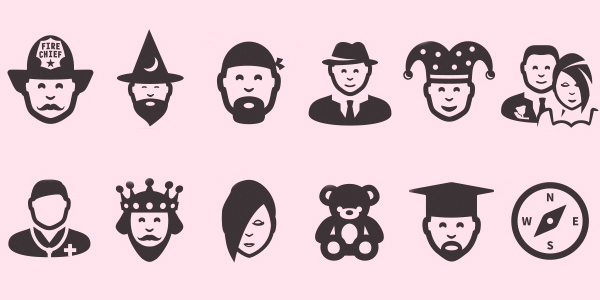
Discover How to Use Brand Archetypes To Build Your Winning Brand
We often feel the need to buy a product or order a service based on how they make us feel. We also tend to associate ourselves with certain brands, becoming a loyal supporter of one set of brands, and an active avoider of others. However, we rarely question why brands evoke such strong emotions, or why we feel compelled to follow certain brands and dismiss others. The answer might lie in your unconsciousness and brand archetypes.
Related: Want Your Customers to be Loyal, Super, Raving Fans? What’s Your Brand Promise?
It’s not uncommon for brand strategists and marketers to turn to the field of psychology in hopes of understanding the human mind better. After all, marketing and branding are all about delivering what the customer wants and sometimes the only way to find out customers’ true desires and core values are to work out the quirks of the human mind. Brand archetypes – a theory rooted in psychology – has found a wide application in marketing and branding.
Here we’re giving you a thorough understanding of brand archetypes theory and showing you it in action in the marketplace with successful case studies so you can discover how to better use brand archetypes to your advantage to grow your business.
For your brand to truly speak to your audience, psychology and branding science have to come together to form the core of your brand. The Persona Brand Building Blueprint™ Mastermind creates a clear process enabling you to influence your customers’ choice within your brand strategy. You’ll discover how to infuse your brand with a strong emotional appeal, tap into your ideal customers’ subconsciousness and create an irresistible bond between your brand and your customers so you increase your sales.
In fact, we have the perfect solution for you, three different ways of working with us to build your personal and corporate brand, depending on your preferences — so if you want us to:
- Build your brand for you – find out more here or get in touch [email protected] or ring +353 1 8322724 or contact us here
- Empower you to build your brand – check out the Persona Brand Building Blueprint™ Mastermind here. This is a two-day intensive where you work on your brand with us codifying and mapping out your brand strategy for business growth. Alternatively, join our half-day Branding Accelerator Masterclass for a fast-injection of brand building essentials. We also have a dedicated Personal Brand & Corporate Brand Alignment Masterclass
- Want a DIY solution? Check out our how to build a brand eprogramme here because it empowers you to build your brand yourself so you become No.1 in your market and increase your profits
The Definition of Brand Archetypes
First defined by the psychologist Carl Jung, archetypes are identical psychic structures common to all of us, that we inherited from our ancestors. Archetypes are deeply rooted in our unconsciousness. As the video below points out, archetypes are revealed by the arrangements they produce in consciousness, and even though we don’t intentionally observe the archetypes, they come to the surface and express themselves through symbolic imagery. Carl Jung’s work followed his observations of religious symbolism. We can’t control the unconsciousness, but because religious symbolism is a product of the unconsciousness it serves as our guide to archetypes — and in this case brand archetypes.
Related: Use Psychology in Your Brand Strategy to Create Irresistible Brand Experiences and Increase Sales
Brand strategists and marketers took Carl Jung’s theory a step further and defined the exact archetypes in the “Hero and the Outlaw: Building Extraordinary Brands Through the Power of Archetypes” book [1]. The book also gives instructions on how to build brands using archetype theory. According to the authors, you can leverage the effect archetypes have on unconsciousness and create brands that are appealing solely because they speak to our deeply rooted beliefs. The book defines 12 brand archetypes which we’ll also review in this article.
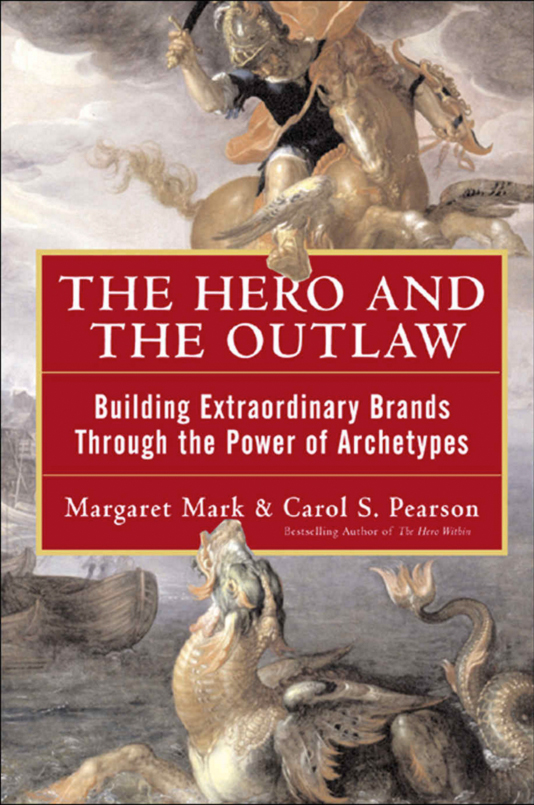
It’s worth noticing that while Carl Jung defined the number of archetypes is limitless, the authors of the aforementioned book chose to describe only 12 archetypes. This is what we typically work with to avoid excessive complexity and to make the theory and application easily usable by clients so they’re empowered to build their brands faster and more effectively.
Jungian theory describes a variety of archetypal images such as archetypal events: birth, death, separation from parents, initiation, marriage, the union of opposites; archetypal figures: great mother, father, child, devil, god, wise old man, wise old woman, the trickster, the hero; and archetypal motifs: the apocalypse, the deluge, the creation. The list of archetypes is limitless and while you can rely on the 12 most commonly found brand archetypes, we encourage you to explore other realms of archetypal imagery and see the archetypes theory as a fluid concept.
The fluidity of the archetype theory can be demonstrated in the video below.
As society progresses, it’s natural to expect archetypes to evolve and new archetypes to come to the fore. In this Youtube video, Carol Sanford describes three new archetypes, created as a result of the technological revolution. The new archetypes are reciprocity entrepreneur, regeneration entrepreneur, reconnection entrepreneur, and realization entrepreneur. As you discover more about the 12 basic archetypes used in branding, keep in mind the evolving nature of archetypes so you can see archetypes like Carl Jung did — as spontaneous outpourings of the unconscious that can take multiple shapes and forms.
Making your brand likeable is primarily about leveraging human emotions and the unconsciousness. The Persona Brand Building Blueprint™ Mastermind empowers you because it shows you how to use emotional triggers to create customer recognition, develop trust and build long-term relationships with your customers through your brand so you can grow your bottom line.
It’s critical to note that branding is NOT marketing or design but the bedrock foundation underpinning your whole business so getting your brand strategy right is critical to your success, particularly in relation to leveraging the use of brand archetypes effectively.
If you want your brand to stand out, increase its visibility, credibility, likability and referability then you need to integrate archetypal branding into your brand building strategy whether you’re building a new brand or re-evaluating an existing one. So here are the 12 brand archetypes most commonly used in branding and marketing to help you make your brand more successful.
Want to discover more about building your standout, №1 powerhouse brand working with us so you can grow your business and increase your profits?
- Schedule an appointment — we can meet in person or online
- Allow us to create a customised plan for you
- Let’s implement the plan together
- Contact us [email protected] or ring +353 1 8322724 (GMT Dublin/London time 9:00 – 17:30 weekdays)
12 Brand Archetypes
1. Magician Brand Archetype – TED
Magicians make us see the world in a new and different way. They are concerned about making the world a special place where dreams come true. Magician brands are visionaries that loudly proclaim their goals of changing the world or people for the better. These are truly inspiring, imaginative brands, that show people the light at the end of the tunnel.
An example of brand built on a magician archetype is TED. TED communication speaks about changing attitudes, lives, and the world with the help of innovative, inspiring ideas. The brand also emphasises its dedication to their main goal: to spread great ideas. Even the brand’s logo and the way speaking events are orchestrated reminds us of a magician’s performance.
Related: How Do Challenger Brands Become Market Leaders?
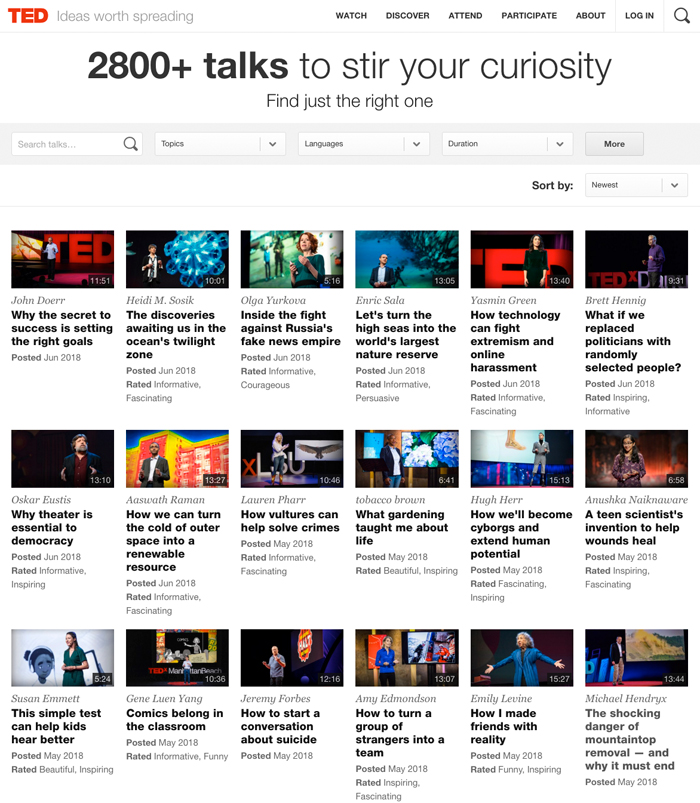
Image via TED
2. Sage/Guru Brand Archetype – Harvard University
The primary concern of Sage brand is to help the world become wiser. Sage brands are characterised by having access to various trusted sources of information, exhibiting intelligence and having a mentor or guru like attitude. Unlike the magician, a sage doesn’t create the future, rather it helps people understand the present by providing expertise, practical information and analysis.
Harvard University is a classic Sage brand example. They emphasize their devotion to excellence in teaching, learning, and research. Being an Ivy League research university, Harvard makes the world wiser by creating knowledge and being the voice of knowledge.
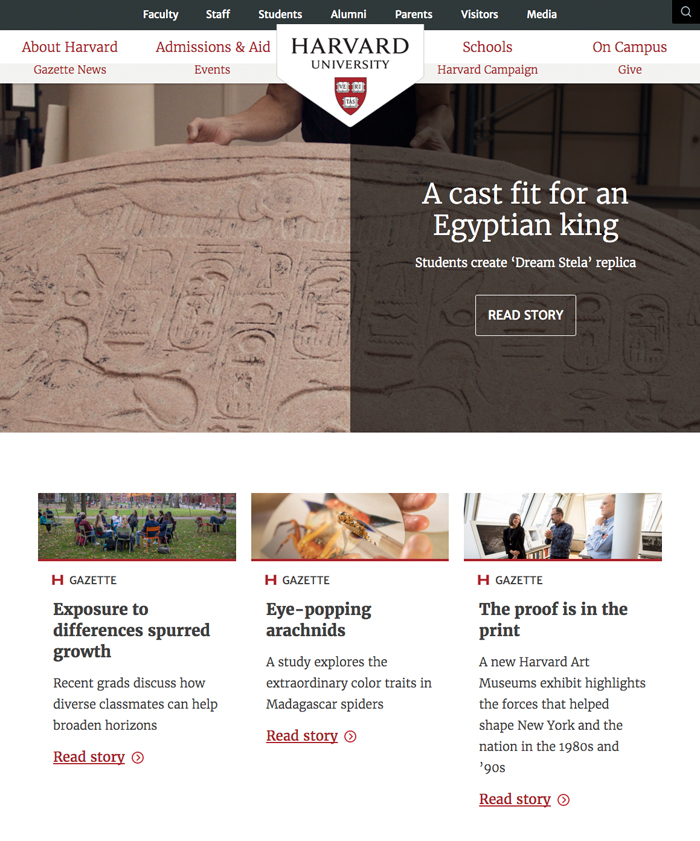
Image via Harvard University
3. Innocent Brand Archetype – Red Cross
The main goal of the Innocent is to be happy. The simplicity and naivety of this archetype are reflected in its youthful and open-hearted attitude towards the world. The innocent strives to be seen as fresh, reliable, trustworthy and exhibits strong values and high morality. This archetype can create feelings of happiness and tenderness in others, but can quickly become overbearing or boring.
Coca-Cola is the first brand that comes to mind when talking about the Innocent archetype. A less obvious example is Red Cross. Red Cross has a very idealistic view of the world and believes that merely stating the mission of making the world a better place should be enough to convince people to participate. While Red Cross’s mission is an important one, instead of calling people together to work towards that mission, the brand embraces independency and naivety – qualities that are intrinsic to the innocent archetype.
Related: 4 Reasons Why Your Business Profit Starts With Your Brand Mission
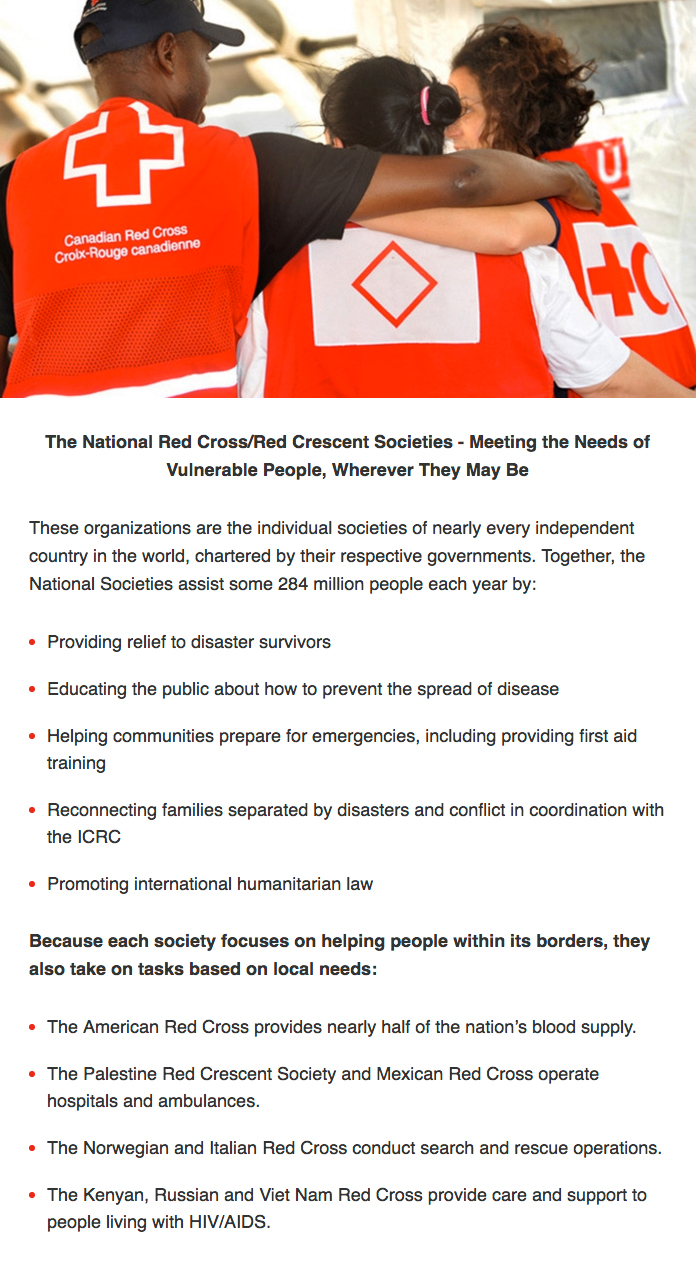
Image via the Red Cross
4. Outlaw/Rebel Brand Archetype – Raf Simons
The outlaw is an interesting archetype because, unlike other archetypes that strive to comply with social norms, the outlaw wants to break the rules. This archetype helps people see beyond their usual circles and habits by challenging the common conventions and exposing negative traits of figures of authority.
Raf Simons on his website claims that his collections are created for confident outsiders. The clothes itself doesn’t follow any conventional rules of fashion and are meant to present a radically different image of masculinity and help the wearer stand out of the crowd. The brand’s communication, as well as designer’s actions and his personal brand, embody the Outlaw or Rebel archetype, which can be seen in the video below, where designer tells his life story, fraught with radical career changes and rebellious acts.
5. Jester/Clown Brand Archetype – Ben & Jerry’s
The Jester takes on a frivolous look at life and his main mission is to bring joy to the world. He is a clown, the life and soul of a party – fun, humorous and light-hearted. The jester’s goal is not to distract people from what they have to do but help them enjoy what they do and have more fun in the process.
Ben & Jerry’s – a US-based ice cream brand – is known for their mischievous marketing campaigns and content stories, that describe even the most serious events with a hint of humour [2].
Related: Use Humour in Branding to Create Strong Emotional Bonds so You Increase Sales
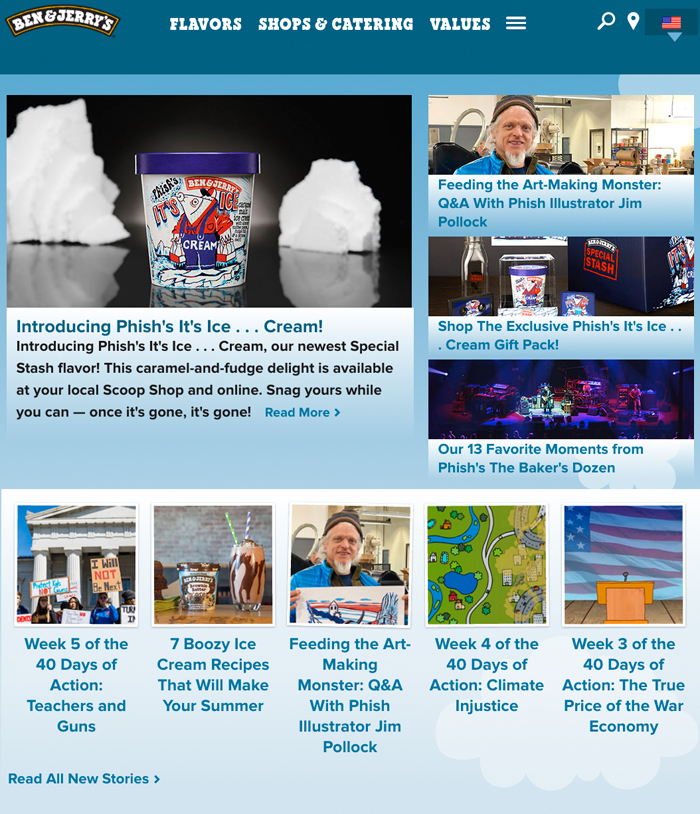
Image via Ben and Jerry’s
6. Lover Brand Archetype – Marie Claire
Lover brands work hard to create the atmosphere of love and foster intimacy. This archetype is all about connection, passion, relationships, and appreciation of each other. At the same time, Lover brands are highly inspirational, as this archetype evokes very strong emotions and associations, originating from our society’s obsession with love and romantic partnerships.
Marie Claire fits the Lover archetype perfectly. The online magazine even has a separate section on their website dedicated to love matters. Aside from that, Marie Claire’s content often centres around weddings, couples, and celebrity family events.
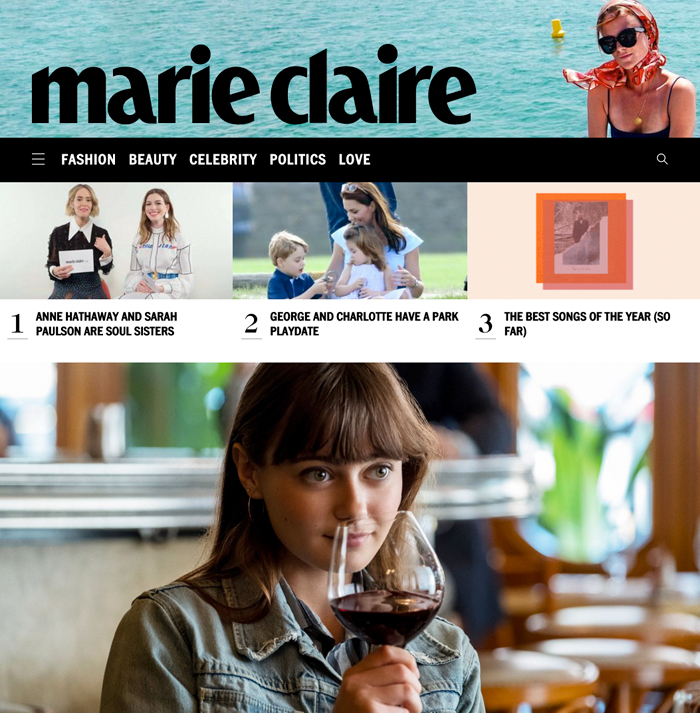
Image via Marie Claire
7. Explorer Brand Archetype – Contiki
The Explorer is always looking for adventure. This archetype is characterised by an independent spirit and restless attitude. The Explorer finds the meaning of life in a constant pursuit of new experiences, which sometimes requires risk-taking and rule-breaking.
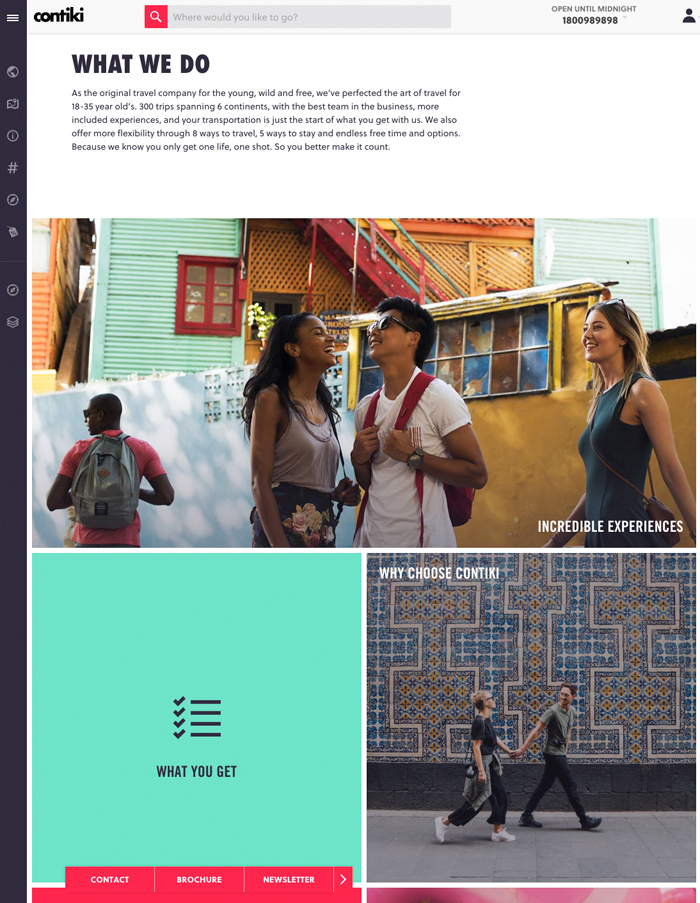
Image via Contiki
As an Explorer brand, Contiki makes travel a central narrative of their brand strategy. Contiki is a New Zealand born brand that organizes bus tours across different continents and countries. The abundance of travel packages on the websites aims to encourage young travellers to never stop exploring.
8. Ruler/Monarch Brand Archetype – Goldman Sachs
A Ruler is a leader who aims to create order from chaos. As an administrator and figure of authority, the Ruler helps people stay organized and see the world as stable and secure.
Goldman Sachs, an example of a Ruler brand, emphasizes their leadership values such as integrity, honesty, and reputation. The visual assets of the brand are designed in light blue colour tones, which points to trust, stability and calmness.
Related: CEO Brand Leadership: How Vision Drives Brand Growth
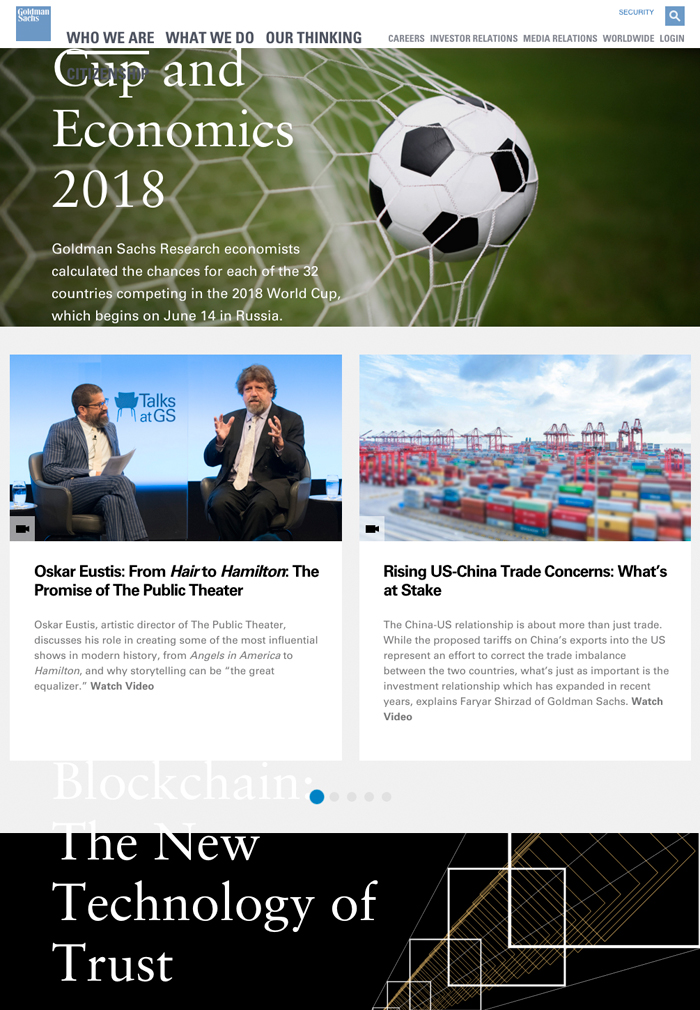
Image via Goldman Sachs
9. Caregiver Brand Archetype – WWF
Unlike the Innocent archetype, the Caregiver seeks selfless serving and aims to bring people together around a shared goal. Caregiver’s nurturing and generous character makes them figures of authority as well as objects of admiration. They serve the public and often leave an impression that they don’t pursue profits even though these are regular businesses.
WWF is a perfect example of a Caregiver brand. Unlike the Red Cross, WWF invites people to participate in the company’s efforts to protect the environment. The brand doesn’t simply expect donations but wants to make people see the consequences of their actions and inspire change.
Related: Social Responsibility: How to Build a Socially Conscious Brand
10. Hero Brand Archetype – Amazon
The Hero lives to save others. Improving the world by acting courageous and bold and inspiring others to do the same is how Hero operates. The Hero’s main goal is to save the humanity and solve global problems.
As a Hero brand, Amazon solves customer problems by delivering convenience, affordable prices, and a wide selection of products. Amazon follows high standards set by Amazon itself, and it’s relentless dedication to solving customer problems is just another sign that the brand is defined by the Hero archetype.
Related: How to Build a Brand Like Amazon, Technology Branding and Marketing
11. Regular Guy/Woman Brand Archetype – Hayden Quinn
A Regular Guy or Woman archetype is driven by a strong desire to connect with others. While his/her obsession with blending in might be seen as a negative quality, the Regular Man/Woman is an appealing archetype as it promotes sharing, connection, and solid values.
Many personal brands are built on a Regular Guy/Woman archetype. Check out Hayden Quinn – the Australian chef who employs a very clear Australian surfer and lover of outdoors image. Surfing and outdoors are such a big part of everyday life in Australia, no wonder many people find Hayden’s brand relatable and charming.
Related: How Your Personal Brand Can Benefit Your Business
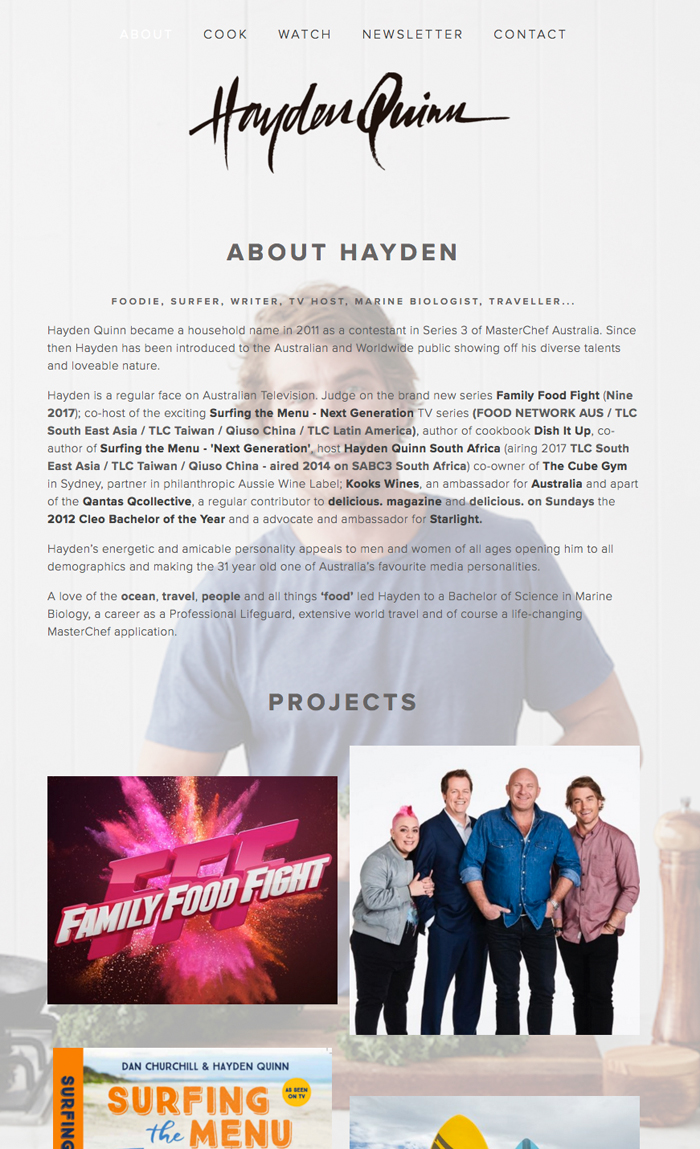
12. Creator Brand Archetype – Adobe
Creators make beautiful things, that have a deep meaning and value. Creators often have a wild imagination and clear vision of what they want to create. Creator brands prioritize the craft and the process of creation over people and practical matters.
A perfect example of a Creator brand is Adobe. The brand helps people foster their imagination and gives them the tools to express creativity. The company’s current tagline “Everyone’s got a dream. Bring yours to life” emphasizes the brand’s dedication to helping others succeed in their creative endeavours.
The 12 main brand archetypes can be grouped into 4 clusters. Each cluster is motivated by its own focus: order, self-knowledge, group belonging, and change. Unsurprisingly, the 4 motivations also represent basic human drivers defined by Abraham Maslow.
Comprehending what motivates each archetype is extremely important because successful branding is built on both a product/service offer, B2B or B2C, and the understanding of how people make decisions.
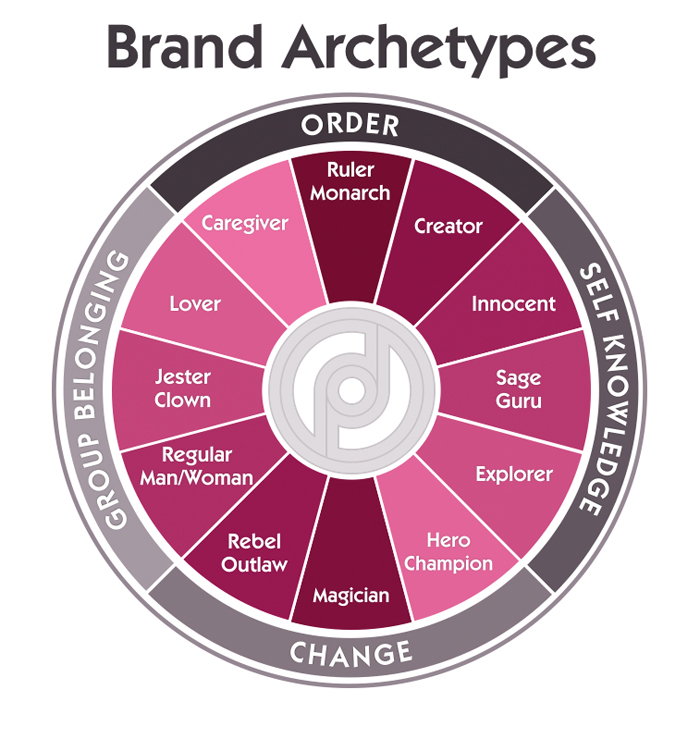
Want to discover more about building your standout, №1 powerhouse brand working with us so you can grow your business and increase your profits?
- Schedule an appointment — we can meet in person or online
- Allow us to create a customised plan for you
- Let’s implement the plan together
- Contact us [email protected] or ring +353 1 8322724 (GMT Dublin/London time 9:00 – 17:30 weekdays)
Brand Archetypes in Different Cultures
Brand strategists and marketers need to be informed and sensitive to cultural differences when applying archetypes in branding. Certain cultures view some archetypes as strictly negative and others as positive. While, for the most part, the 12 archetypes are universal, remember that they were traced in religion and history, and the present situation might bring changes that undermine our perception of one archetype and strengthen positive associations linked to another archetype.
Related: Redefining Your Brand Culture After a Rebrand, Sale or Merger
In the United States, the Levi’s brand carries qualities and characteristics of the Outlaw archetype, while the brand’s image in Europe and Asian countries is more of an elevated Hero. This affects not only branding collateral and communication but also the company’s pricing policy.
Final Word
The intrinsic appeal of archetypes in branding lies in their power to shift branding from push to pull so that instead of shouting your messages in hopes of attracting new clients, you’re empowered to engage your primary target customers by triggering images and associations in their unconsciousness so they’re naturally drawn to your brand.
Archetypes also help you build customer relationships, as opposed to merely generating one-off sporadic transactions, which in turn affects the perception of your brand and strengthens customer loyalty.
Even though we don’t consciously realise it, archetypes contain primal meaning, which is sometimes difficult to readily articulate, but easily understood and intuitively accepted by our minds. This mysterious quality of archetypes, as well cultural differences, carries certain dangers for branding professionals, so on a cautionary note, archetypal theory shouldn’t be the only factor that drives your brand building endeavours.
Brand archetypes can be leveraged very effectively to empower you to build a winning brand with strong emotional impact when combined with a strong brand strategy, thorough primary audience research with perhaps a brand audit, deep understanding of the market and it’s cultural nuances, coupled with your creative vision as a business leader.
If you’d like to make your brand much loved by your customers using the power of brand archetypes, then The Persona Brand Building Blueprint™ Mastermind is the perfect solution for your because it gives you a hands-on process in how to pitch, price and position your brand to your ideal customer — you work on your brand throughout this two-day mastermind so you’re empowered to increase your sales.
For business leaders and entrepreneurs that want to embrace brand transformation with a DIY solution, take a look at the Personality Profile Performer™ Programme here. It’s a step-by-step process empowering you to build your highly recognised brand yourself so you can grow your business faster and increase your profits.
Questions to Consider
- What brands do you follow? Define the archetype for each of your favourite brands
- What archetypes have the most emotional impact on you personally and why?
- What’s the core motivation of your brand?
- Define the relationship your brand has with your audience and identify which of the 12 archetypes it best fits
- How would you characterise each archetype’s appearance? What design elements express each archetype effectively?
Want to discover more about building your standout, №1 powerhouse, brand working with us so you can increase your profits?
- Schedule an appointment — we can meet in person or online
- Allow us to create a customised plan for you
- Let’s implement the plan together
- Contact us [email protected] or ring +353 1 8322724 (GMT Dublin/London time 9:00 – 17:30 weekdays)
Your Client Satisfaction Guarantee
- When you work with us we’ll create a customised brand building plan and strategy with clear investment for you tailored to your specific requirements and preferences
- You’ll know each step of your brand building journey before we start because we’ll discuss it, document it and agree on it with you before work commences
- You’ll have timelines, key milestones and deliverables to evaluate and approve for each stage and part of your brand building process
- Because we know the unexpected sometimes happens we can make adjustments along the way if you need it and if something extra is requested we’ll ensure you’re fully appraised about what that entails before committing
- As we achieve pre-agreed objectives you’ll be able to evaluate your brand building work and strategy in progress, coupled with the outcomes to ensure return on investment
Get in touch today because we’d love to get started helping you build your standout, powerhouse brand so you can increase your profits and leave your competitors way behind. Email us [email protected] or ring us +35318322724 (GMT 9:00-17:30) and ask about our VIP Brand Strategy Discovery.

Want to build your brand yourself with a DIY brand building solution? Start building your standout, highly visible, credible and much loved brand yourself here now
Sources
- https://www.amazon.com/Hero-Outlaw-Building-Extraordinary-Archetypes/dp/0071364153
- https://www.benjerry.com/whats-new/2018/05/ppc-week-3



